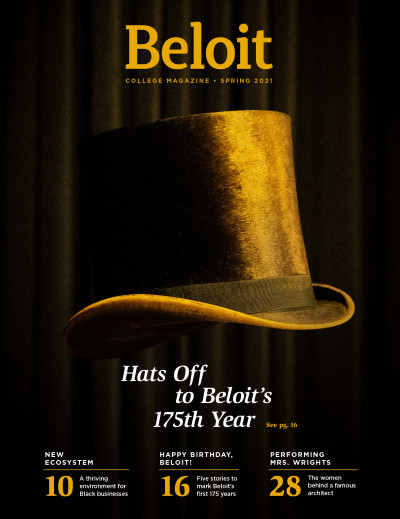Baseball Historian John Thorn’68 Applauds Inclusion of the Negro Leagues
Professional baseball, like many American institutions, was racially segregated in the first half of the 20th century. Even after Jackie Robinson broke the big-league color barrier in 1947, the record books omitted the achievements of Black players who had formed leagues of their own—until this past December.
John Thorn’68, Major League Baseball’s official historian, played a key role in the months-long process that led MLB to re-categorize several professional Negro Baseball Leagues as “major leagues.” The designation means the leagues’ records from 1920-1948 will now be included in baseball’s official statistics.
For baseball fans, especially those who love sports history, Thorn has the ultimate dream job. He’s written several seminal books on the sport, including Total Baseball:The Official Encyclopedia of Major League Baseball, andBaseball in the Garden of Eden: The Secret History of the Early Game, which led a reviewer in theNew York Timesto call Thorn “a researcher of colossal diligence.” Thorn served as senior creative consultant forBaseball, the 1994 documentary series by filmmaker Ken Burns.

Thorn says it is “profoundly gratifying” to see the Negro Baseball Leagues included in the majors. Thorn, MLB’s historian since 2011, says the move affirms the quality of play in the leagues, which brought to MLB “a combination of power and speed, and to my mind, the beautiful game of the ’70s and ’80s,” he said in theMilwaukee Journal Sentinel.
Thorn says this recognition also takes a step toward amending the “twin exclusion” of Black baseball players—first when they were forced to form their own leagues because of segregation—and again in 1969, when the Special Baseball Records Committee included four defunct circuits in the official record, but not the Negro Leagues. Thorn calls the decision a mistake made “most grievously in hindsight.”
Including the Negro Leagues will shuffle some existing records, while spotlighting players who went unknown to regular fans through no fault of their own.
刺表示一个字符les “Chino” Smith, a skilled hitter who played in the 1920s.
“His seven-year career produced three batting averages over .400, including a .451 mark in 1929 that, tentatively, will become the highest in MLB history,” Thorn says. “Who was this guy? I, who might be expected to know, did not. His baseball days ended when he contracted yellow fever in Cuba in 1931.”
While he suspects some fans may long for the days when official statistics seemed like they were etched in stone, he says historians and statisticians understand that numbers can have surprising fluidity.
“The historian’s conclusion is that a statistic (like any prosaic fact) may be regarded as a snapshot in time, not an eternal verity.”



